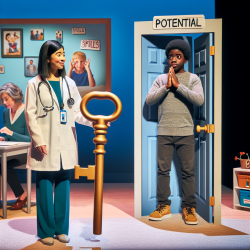As a dedicated speech-language pathologist, you understand the profound impact your work has on the lives of hearing-impaired children and their families. "The Clinician's Turn: Speech Pathology" provides a treasure trove of insights and methodologies that can enhance your practice. This blog post aims to distill key findings from this pivotal research, helping you to implement these strategies and encouraging you to delve deeper into the original work.
The Early Stages of the Habilitative Process for Hearing-Impaired Children and Their Families
Lynne C. Brewster's work emphasizes the importance of early intervention and parental involvement. Brewster outlines several approaches to support parents through the initial stages of the habilitative process:
- Pre-Fitting Consultations: Engage parents before fitting hearing aids to foster understanding and involvement in the diagnostic process.
- Gradual Introduction to Hearing Aids: Recommend short, enjoyable activities to help children get accustomed to wearing hearing aids, gradually increasing the duration over time.
- Auditory Awareness Training: Encourage parents to expose their children to various environmental sounds and help them associate meanings with these sounds.
- Natural Language Approach: Focus on augmenting existing interactive processes between parents and children, rather than introducing entirely new skills.
Implementing these strategies can significantly improve the early habilitation process, fostering a more supportive and effective environment for both children and their families.
The Role of the Speech Pathologist with the Hearing Impaired
Lucia Harold's program highlights the critical role of individualized speech and language training for hearing-impaired children. Key components of her approach include:
- Individualized Therapy: Develop personalized programs based on comprehensive speech-language and audiological assessments.
- Classroom Reinforcement: Collaborate with classroom teachers to reinforce language skills and ensure consistent amplification use.
- Parental Involvement: Maintain close contact with parents to encourage home carry-over of speech and language skills.
- Auditory Training: Integrate auditory training into speech and language activities, focusing on useful speech production information.
By adopting these elements, you can create a more holistic and effective speech therapy program that addresses the unique needs of each child.
Combining Expertise: Teachers of the Deaf and Speech Pathologists
Peter J. Owsley advocates for a collaborative approach between teachers of the deaf and speech pathologists. His key recommendations include:
- Specialized Training: Ensure that teachers of the deaf receive specific training in speech development and correction.
- Cooperative Work Environment: Foster a collaborative environment where classroom teachers and speech consultants work together to develop communication skills.
- Focused Competence: Recognize the distinct competencies of teachers of the deaf and speech pathologists, and leverage their expertise accordingly.
This cooperative model can maximize the effectiveness of speech therapy interventions, providing a comprehensive support system for hearing-impaired children.
In conclusion, "The Clinician's Turn: Speech Pathology" offers valuable insights that can enhance your practice as a speech-language pathologist. By implementing these strategies and fostering collaboration, you can significantly improve the outcomes for hearing-impaired children. For a deeper dive into the research, please follow this link: The Clinician's Turn: Speech Pathology.










